Are mixers in crisis?
By Nicola CarruthersThe tonics and mixers category has undergone severe ups and downs in recent months, with companies going under and others diversifying.
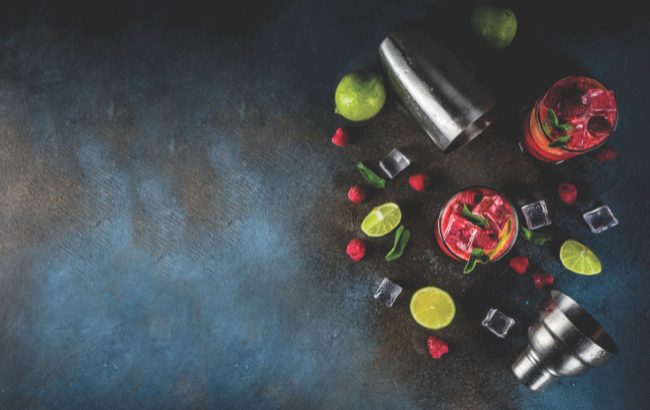
*This feature was originally published in the November 2024 issue of The Spirits Business magazine.
One thing the Covid-19 pandemic can be credited with is the boom in at-home spirits consumption, and, in turn, mixer sales. But in the past year spirits have struggled as inflation hit household budgets, and drinkers pivoted to longer serves in the on-trade. Gin’s decline in markets such as the US and Spain has also had an impact on tonic water sales.
In the face of increasing competition, and to increase revenue streams, companies have diversified their portfolios beyond tonic, soda water, and ginger by expanding into the emerging cocktail-mixer segment.
A study by Custom Market Insights says global cocktail mixers were valued at approximately US$8.2 billion in 2023, and are expected to reach US$8.89bn in 2024. The sector is predicted to hit US$18bn by 2033, rising by a compound annual growth rate of 8.2% between 2024 and 2033.
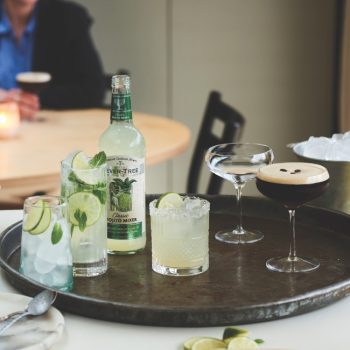 Category giant Fever-Tree took note of the boom in the sector, expanding beyond carbonated drinks for the first time in March 2023 when it released three premium bottled cocktail mixers. The UK-based company said the move was made to reflect the demand for cocktails in the country, including the nation’s most popular serves: Margarita, Mojito, and Espresso Martini. Fever-Tree’s bottled range sought to help consumers make cocktails more easily without the need for “copious [numbers] of limes” or the purchase of “niche liqueurs and syrups that end up being half used”.
Category giant Fever-Tree took note of the boom in the sector, expanding beyond carbonated drinks for the first time in March 2023 when it released three premium bottled cocktail mixers. The UK-based company said the move was made to reflect the demand for cocktails in the country, including the nation’s most popular serves: Margarita, Mojito, and Espresso Martini. Fever-Tree’s bottled range sought to help consumers make cocktails more easily without the need for “copious [numbers] of limes” or the purchase of “niche liqueurs and syrups that end up being half used”.
Strong growth
According to the company’s interim results for the year ending 30 June 2024, non-tonic products now comprise more than 40% of global revenues, led by strong growth of ginger beer and a growing position in cocktail mixers and adult soft drinks. In Europe, the company noted gains for Pink Grapefruit, and its Mojito and Margarita cocktail mixers for the first half of the year, supported by co-promotions with vodka and Tequila brands, and a focus on the Paloma serve.
Oliver Winters, director of communications and environmental, social & governance at Fever-Tree, says the company had noticed a “real gap in the market for premium cocktail mixers” as drinkers returned to the on-trade, boosting cocktail consumption. Initially released in the UK at Sainsbury’s, Waitrose, and online at Ocado, the cocktail mixers line has since launched in the US and is being rolled out across Europe. The range was soon expanded with a Passionfruit Martini, and in North America the company has released a Bloody Mary mix and a Light Margarita version. Fever-Tree’s Espresso Martini variant is set to hit the States this autumn. The Margarita, Light Margarita, and Bloody Mary have also gained good traction in the US market, Fever-Tree said in its latest financial results.
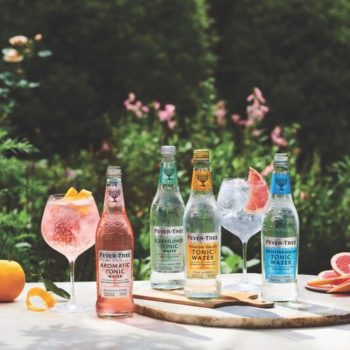 According to Fentimans’ Premium Soft Drinks and Mixers Market Report 2024, the soft drinks and mixer market was valued at £4.6 million (US$5.9m) in Great Britain’s on-trade, rising by 3.8% for the 12 months to October 2023. The premium end of the soft drinks and mixer category was valued at £450m, and has a 6.3% share of the total soft drinks market. But in terms of the top five soft drinks categories, mixers, which ranked in fourth place, reported a 4.6% drop.
According to Fentimans’ Premium Soft Drinks and Mixers Market Report 2024, the soft drinks and mixer market was valued at £4.6 million (US$5.9m) in Great Britain’s on-trade, rising by 3.8% for the 12 months to October 2023. The premium end of the soft drinks and mixer category was valued at £450m, and has a 6.3% share of the total soft drinks market. But in terms of the top five soft drinks categories, mixers, which ranked in fourth place, reported a 4.6% drop.
The biggest seller, cola, grew by 7.8%, while juices (up by 1.7%) overtook lemonade (down by 4%) as consumers’ second choice. In fifth place were flavoured carbonates, which rose by 4.9%.
At-home sales of adult soft drinks and mixers in Great Britain in the 12 months to the end of October reached £470m. However, mixers saw their value decrease, falling by 5% to £293m, while soft drinks (which account for 38% of total adult soft drink and mixer sales) rose by 2%.
The Fentimans report noted that prices have risen, with the average price by unit of mixers having jumped up by 16% over the past two years to £1.54 because of increased costs for ingredients, energy, labour and transportation.
In the US, the Margarita has been the best-selling cocktail for a number of years. For American Beverage Marketers (ABM), which owns the Master of Mixes and Finest Call mixer ranges, its sour mixes are its biggest-selling products worldwide.
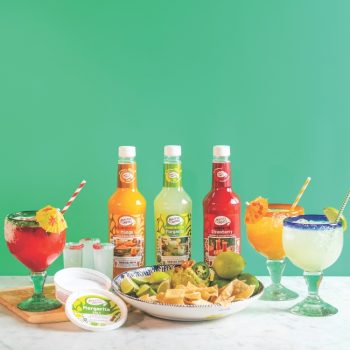 “Before Covid-19, supermarket chains and retailers were reluctant to carry retail cocktail mixers, but the pandemic changed that perception,” says William Hinkebein, chief marketing officer of ABM. Post-Covid, retail sales surged, and the company aims to expand further, especially in Europe. The company operates in 115 countries, with the US the largest market, followed by a significant presence in the Caribbean, Central and South America, and Europe. In the UK, the company recently joined with Franklin & Sons owner Global Brands as a distribution partner to grow its sales in the on- and off-trade. Post-Covid, the company has expanded to more retailers globally, including Australia, New Zealand, Singapore, and the Philippines.
“Before Covid-19, supermarket chains and retailers were reluctant to carry retail cocktail mixers, but the pandemic changed that perception,” says William Hinkebein, chief marketing officer of ABM. Post-Covid, retail sales surged, and the company aims to expand further, especially in Europe. The company operates in 115 countries, with the US the largest market, followed by a significant presence in the Caribbean, Central and South America, and Europe. In the UK, the company recently joined with Franklin & Sons owner Global Brands as a distribution partner to grow its sales in the on- and off-trade. Post-Covid, the company has expanded to more retailers globally, including Australia, New Zealand, Singapore, and the Philippines.
There are still plenty of retailers in Europe that the company is not stocked by, such as Tesco in Great Britain. The company is also in discussions with Asda and other groups in the country to expand its retail presence.
Carbonated products
Q Mixers, from Brooklyn, New York, started with a portfolio of carbonated products, including tonic, ginger ale, ginger beer, and club soda, before expanding into cocktail mixers in 2021. The cocktail mixer line includes the Bloody Mary, Margarita, and the latest addition, Spicy Mango Margarita, which launched in spring 2024.
Despite being 10% of Q’s business, the cocktail mixers are growing, with the Margarita and Bloody Mary having high menu penetration in US restaurants, according to Jon Worthey, the company’s vice-president of strategy. The pandemic led to a boom in cocktails, which influenced the decision to diversify into cocktail mixers. The spicy mango flavour combines rich organic agave, natural mango, key lime juice, orange essence, and jalapeño purée.
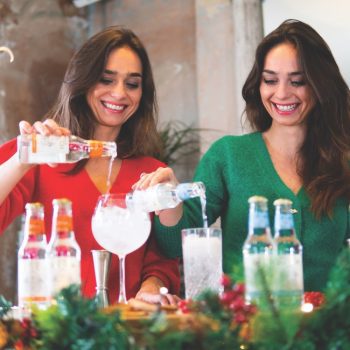 Double Dutch, founded by twin sisters Joyce and Raissa de Haas and backed by the Heineken family, released two cocktail sodas – Cucumber Margarita with Chilli and Bloody Mary – several years ago. However: “Despite good performance, the Bloody Mary soda was too innovative for mainstream menus, and the product was planned as a limited edition,” says Raissa. “People were expecting a kind of juice-based Bloody Mary drink. So that was always quite difficult. We didn’t really want to launch it as an alternative to the Bloody Mary, but to give the same flavour profile that was savoury, peppery, with kind of complex notes, a lighter version of it – that was quite difficult. So we always kind of planned it to have a year launch, then we took them out [of the market at the] end of 2020.” However, the founders did not rule out bringing cocktail mixers back to the portfolio in the future.
Double Dutch, founded by twin sisters Joyce and Raissa de Haas and backed by the Heineken family, released two cocktail sodas – Cucumber Margarita with Chilli and Bloody Mary – several years ago. However: “Despite good performance, the Bloody Mary soda was too innovative for mainstream menus, and the product was planned as a limited edition,” says Raissa. “People were expecting a kind of juice-based Bloody Mary drink. So that was always quite difficult. We didn’t really want to launch it as an alternative to the Bloody Mary, but to give the same flavour profile that was savoury, peppery, with kind of complex notes, a lighter version of it – that was quite difficult. So we always kind of planned it to have a year launch, then we took them out [of the market at the] end of 2020.” However, the founders did not rule out bringing cocktail mixers back to the portfolio in the future.
While they were created to pair with their traditional spirits (vodka for Bloody Mary and Tequila for Margarita), the de Haas sisters note that they were also being combined with other spirits. “The Bloody Mary also worked really well with whisky,” says Raissa.
Bloody Marys appear to be a firm favourite with North American drinkers, according to Zing Zang’s CEO Brent Albertson, who joined the company in 2016 after a 30-year stint at Diageo. In 2017 Zing Zang’s flagship Bloody Mary Mix became the biggest-selling Bloody Mary in the US, and the company also produces Margarita mixers (including a strawberry flavour), a Piña Colada mixer, a Sweet & Sour mixer, and its new Michelada mixer (designed to be paired with beer). The company recently brought out its Dill Pickle Bloody Mary Mix, and a 1.75-litre version of its Bloody Mary – a key product for the company when it comes to tailgating and bigger gatherings, says Albertson.
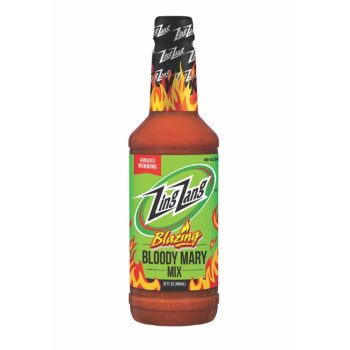 Expansion plans
Expansion plans
Founded in 1996, Zing Zang surpassed the one million milestone in 2016, and hit 2.3m cases in 2023, Albertson notes. The company has also expanded into Canada, and its Bloody Mary is also in the Caribbean. Albertson says Zing Zang plans to expand into Mexico, South America, and the UK.
Zing Zang’s Bloody Mary mixer (which comes in a 946ml large-format bottle, and a 220ml can) has seen its popularity grow on occasions such as high-end brunch or golf, he adds. Albertson is also eyeing travel retail: “When you think about Zing Zang, one of our competitors has been on airlines for 40 years – a basic tomato juice. A lot of airlines want to trade up.”
The biggest competitors for Zing Zang are Mr & Mrs T, Jose Cuervo Mix, and Master of Mixes. Citing Nielsen data for the US off-premise, Zing Zang is predicted to overtake Mr & Mrs T as the top-selling cocktail mixer brand in 2024 – a position it also held between 2020 and 2022. In the early 2000s, Zing Zang was “100% on-premise”, and had established a strong reputation with bartenders. However, the brand “stepped on the gas” to secure listings in grocery and liquor chains, says Albertson. He believes the brand is “on the way to being a household name. We’re still new as a brand, growing share, finding areas of opportunity, new channels and looking at places like airlines, golf, and the West and Northeast [of the US] – there’s a lot of white space.”
Albertson sees an opportunity for Zing Zang to infiltrate the Caribbean with its more premium offerings in resorts, citing the likes of its “all-natural Piña Colada” because “low-end competitors [have been] down there for 10 years”.
Data provided by Zing Zang showed that the cocktail mixers category has seen a huge trend towards premiumisation in recent years. In 2017, the below-premium price tiers represented two-thirds of total category dollars (a 67.2% share) but in the year ending 5 October 2024, the dollar split between below premium and premium-plus is almost equal (49.2% versus 50.8% for premium-plus).
With sales booming in the global cocktail mixer space and an ongoing thirst for elevated serves, the category shows no signs of slowing down.
Is the crowded mixer space having a shake out?
This year saw the surprising collapse of two major mixer producers: New Zealand’s East Imperial and the UK’s Lixir. Their exits could perhaps be attributed to the current economic environment, with producers dealing with increased costs for everything from packaging to transport.
Fever-Tree’s full-year financial results for 2023 indicated that the company was hit by “transatlantic freight rates and elevated energy costs linked to glass production”. More recently, the company’s revenue for the first half of 2024 fell by 6% in the UK and by 12% in Europe, which it attributed to “unseasonable weather” in the second quarter of the year.
On the upside, there have also been some notable investments in the category this year. Soft drinks giant Britvic, owner of tonic and mixer manufacturer London Essence Company, was acquired by Carlsberg in a £3.3 billion deal, and India’s biggest brandy maker, Tilaknagar Industries, took a minority stake in the producer of local bottled cocktail mixer brand Bartisans. According to Tilaknagar, the ready-to-pour mixer industry in India is projected to reach US$830 million by 2030. The aim is to create innovative cocktail mixers to pair with brandy.
Are you considering diversifying your range into other categories, like cocktail mixers or RTDs?
George Bagos – co-founder, Three Cents
“We have our sights set on expansion, but for now this is focused on expanding our existing soda range, and equipping bartenders with authentic high-quality mixers. We’re committed to leading the charge on new industry trends, and creating expressions with complex flavour profiles that bartenders are getting behind, but that also work well with carbonation. Our recent launch – Fig Leaf Soda – is a perfect example of this, as it offers a distinctive flavour that is sweet and fruity, yet balanced by a subtle and earthy undertone. Work is also under way on another launch planned for 2025.”
Tom Baker – founder, Mr Black Coffee Liqueur
“We make one thing – and we’ve been doing that one thing well since 2013 with no plans to change it. Our hyper focus on making extraordinary coffee liqueur is the reason for our success – it doesn’t taste as good as it does by accident. Personally, I get excited by founders taking the same natural, high-quality approach to other types of liqueurs: Kaveri, Nixta, Chinola, and Tanica spring to mind.”
Marco Frizzarin – senior international brand manager, Thomas Henry
“We know that to grow there is definitely also the necessity to explore these kinds of projects and to diversify. There are also some prototypes in terms of RTDs and products for other categories in the pipeline. We are focusing on our core mixer range, and pushing and growing it further. How we have entered other categories is, for instance, our strategic partnership with Undone alcohol-free ‘spirits’ since 2024. We see the trend of low- and no-ABV becoming ever more popular, and that is why our investment into it, and the possibility to grow together and influence the no-ABV together with both our brands is our way to go.”
Related news
Desi Daru features at Sushisamba
